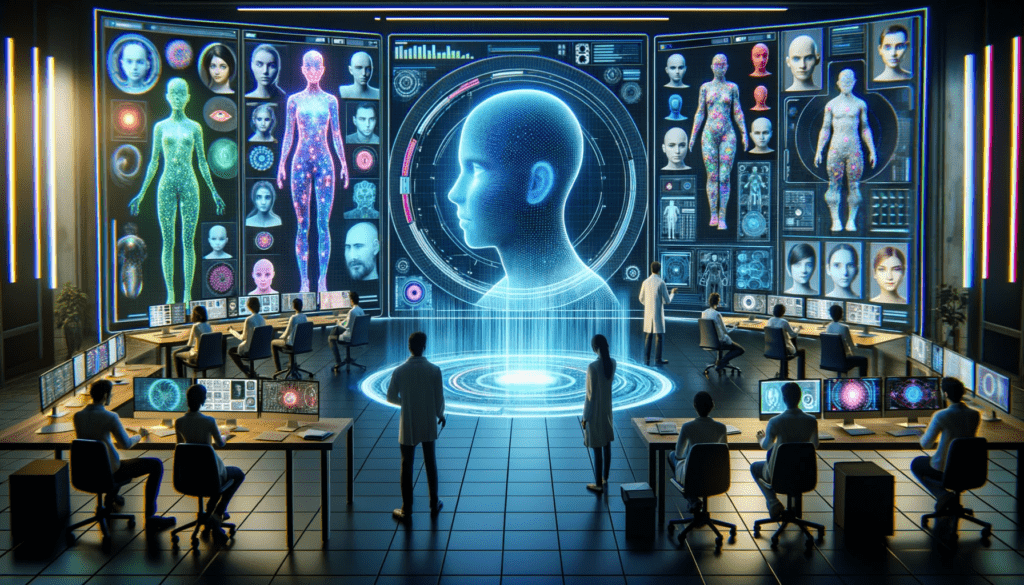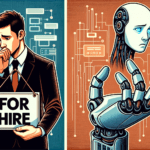Introduction to Avatar Technology
Avatar Technology has revolutionized the way we perceive and interact with the digital world. Emerging as a powerful tool for creating virtual representations, it allows users to shape digital identities that are essentially mirrors or sometimes fanciful versions of themselves. The digital realm, once a two-dimensional space, has now become a three-dimensional universe where users can roam, communicate, and express themselves through these avatars.
Indeed, Avatar Technology has made it possible to transcend the physical boundaries of reality, to create a digital identity that manifests realms beyond physicality. A perfect example would be the Metaverse, where our avatars can play games, attend concerts, or simply commune with other avatars in ways that are strikingly similar to real-life interactions. It's interesting to observe how virtual representations are continuously complementing our physical existence, thus blurring the lines between what is real and what is virtual.

Digital Representation: A New Era of Identity
In the ever-evolving age of digitalization, virtual representations offer an intriguing new plane of self-expression and communication. They allow us to portray manifold aspects of our identities - from distinct physical features that reflect our real-world appearance to more abstract traits such as personal values and aspirations. These digital proxies, craft through avatar technology, enable individuals to inhabit virtual environments organically and interact seamlessly.
Contributing notably to the sophistication of virtual representation, Generative AI technology is creating a revolution. By leveraging machine learning models, it can produce avatars that are startlingly lifelike. This increased realism enhances the user's sense of presence in the virtual realm, bridging the gap between the tangible and intangible. For instance, Generative AI can simulate fine details such as facial expressions and body language, making the avatars seem more authentic and relatable. Avatar technology, in this sense, is not merely a tool for escapism; they are gateways to whole new dimensions of human interaction.
Augmentation vs Escapism: The Role of Avatars
Avatars, digital representations of ourselves, play a distinct role in both the ascension and escapism within innovative platforms such as the Metaverse. These identity markers allow us to enhance our real-world experiences by integrating Augmented Reality (AR) technology. This augmentation not only redefines how we interact with the digital environment but also brings a new layer of interactivity in our physical world. For instance, in a collaborative meeting or AR gaming, avatars provide a way for individuals to express themselves and communicate in enriched, immersive ways.
At the other end of the spectrum, avatars provide a pathway to escapism, where individuals can diverge from their real-world identities and reinvent themselves in virtual environments. This aspect is prominently seen in the realms of virtual reality gaming and social platforms, where users often adopt unique, sometimes fantastical, digital personas. Here, avatar technology enables users to explore different facets of their identity and experience situations beyond the scope of their physical reality. For example, through their avatars, users can fly in mythical realms or interact with extraterrestrial beings in the Metaverse, activities that would be impossible in the real world.

Generative AI: The Bridge Between Real and Virtual
The advent of generative AI is reshaping the way we perceive, interact and engage with virtual reality (VR) platforms. It's a cutting-edge component of avatar technology, allowing for the creation of strikingly realistic 3D avatars. This renders characters that befit the physical attributes and specific preferences of the users, thereby fostering a personalized virtual experience.
For instance, in modern online games, players use generative AI to design their unique 3D avatars. Avatar technology offers detailed customization options, from facial features to body types, and even intricate physical movements. It's more than just aesthetics; these AI-generated avatars mirror the users' identities, thereby facilitating deeper connections and engagements within the virtual world. This seamless blend of real and virtual elements creates immersive experiences that seem almost indistinguishable from actual reality.
Customization: Crafting Authentic Virtual Identities
As the realm of avatar technology continues its unprecedented expansion, one aspect that is becoming increasingly significant is the degree to which users can customize their digital representations. Directly linked to the user's sense of self and personal identity, customization options serve a crucial role in mirroring individuals' uniqueness within digital realms. Features such as real-time capture, diversity in avatar appearances, and detailed personalization choices such as attire or accessories, allow users to vest their avatars with a greater sense of authenticity, reflecting their physical attributes as well as personal style.
A prime example of the power of customization lies in the integration of real-time capture and motion-tracking technology in avatar creation. This technological partnership allows users to replicate their own movements in their avatars, effectively blurring the line between their real and virtual entities. Consequently, the avatar becomes not just a hollow digital persona but a genuine reflection of their self, displaying real-life tendencies and quirks. In this way, avatar technology affords users the opportunity to create and personalize their virtual identities, ultimately driving a more immersive and satisfactory user experience.

Interactive Environments: Beyond Gaming
Virtual world interaction is not just restrained to the gaming sector, avatar technology is fast-growing and expanding its influence across several other disciplines. The onset of this technology as a tool for socialization is evident. Platforms, such as social media sites, chat rooms, and virtual conferences, now employ avatar technology. People can craft a digital representation of themselves, which provides a new dimension to online interactions. The VR software allows individuals to move, interact, and communicate in this virtual world, letting the user’s personality shine through their customized avatar and reinforcing a sense of presence in online chats and gatherings.
Avatar technology is now being increasingly used in the educational realm to facilitate immersive learning. Teachers can create a virtual representation of the lesson and students can interact with this content through their avatars. This powerful form of virtual world interaction can bring abstract concepts to life, making learning a truly engaging and interactive process. The potential of avatars also extends to the healthcare sector, where therapists using avatar technology can simulate various environments for those needing physical therapy, changing the landscape of rehabilitation. Hence, the breadth of avatar technology's usage is not limited to games, but extends to virtually every field.
Professional Applications of Avatar Technology
Avatar technology has been making a significant impact across different professional fields, spanning from entertainment industries to educational institutions. This technology provides a way to represent oneself in a virtual environment, from basic pictorial representation to near-real, fully-animated digital forms, thereby enabling extensive utilizations. A key example in the entertainment industry is the usage of avatar technology in creating complex, realistic characters for movies and video games.
More and more educational institutions are also exploring avatar technology as an effective medium for distance learning. Here, teachers can customize their digital representation, engaging students better, and providing a unique, immersive learning experience. It also breaks the barriers of physical location and time, expanding accessibility for learners spread globally. Meanwhile, in healthcare, avatar technology is being utilized to create accurate patient simulations for medical training. These applications are showcasing the potential of avatar technology in transforming our professional lives, highlighting the dawn of a truly digital age.

Real-time Capture and Motion Tracking: Enhancing Virtual Realism
Real-time capture and motion tracking have revolutionized avatar technology, augmenting the level of immersion and interactivity between human users and their virtual counterparts. These technological advancements make it possible to precisely mirror the movements of the user in the virtual realm, thereby enhancing the realism of the user's digital representation. By employing sensors and cameras, the exact position, angle, and speed of an individual's actions can be tracked and transferred onto an avatar, creating a more lifelike digital embodiment. An example elucidating this application is the use of motion-capture suits in blockbuster Hollywood films, allowing actors' movements to be digitized and manipulated in post-production to create realistic looking creatures and characters.
This immersive aspect extends beyond the scopes of film and gaming. It influences professional sectors like medicine, where doctors can use avatar technology for remote surgeries, or simulate complex procedures. Similarly, in education, teachers can craft digital interactive lessons via avatars, fostering a greater understanding and engagement among students. Embracing real-time capture and motion tracking fuels the potential of avatar technology to replicate the tangible world with acute detail, broadening the possibilities of virtual interactivity.
- Real-time capture and motion tracking technologies have greatly enhanced avatar technology, resulting in a higher level of immersion and interactivity between human users and their virtual counterparts.
- These advancements allow for the precise mirroring of user movements within the virtual realm, thus increasing the realism of digital representations.
- Through the use of sensors and cameras, an individual's exact position, angle, and speed can be tracked. This information is then transferred onto an avatar to create a more lifelike digital embodiment.
- One notable example illustrating this application is seen in Hollywood films where motion-capture suits are used. These suits enable actors' movements to be digitized and manipulated post-production to create realistic-looking creatures or characters.
The impact of these immersive technologies extends beyond film production and gaming:
- In medicine: Doctors can utilize avatar technology for remote surgeries or simulate complex procedures. This not only improves precision but also provides opportunities for training without risk.
- Remote Surgeries: Surgeons can control robotic arms through avatars which mimic their movements accurately in real-time - eliminating geographical barriers while performing critical operations.
- Simulated Procedures: Medical professionals can practice complicated surgical procedures on virtual patients before applying them on actual humans – reducing potential risks significantly.
- In education: Teachers can use avatars to craft interactive lessons that foster greater understanding among students. Interactive learning modules created using avatars make abstract concepts tangible – enhancing student engagement considerably.

VR and AR: Immersive Technologies Fueling Avatar Adoption
Virtual Reality (VR) and Augmented Reality (AR) are reshaping the way we perceive digital identities, and avatars are at the forefront of this revolution. Different avatar technologies are being deployed to create compelling, immersive experiences, further bridging the gap between the physical and digital realms. VR's strength lies in its ability to transport users to entirely fabricated settings, where they can interact with others through their digital avatars. Its captivating environment and phenomenal sensory experiences pave the way for widespread avatar adoption, far beyond what was previously perceived.
The simultaneous evolution of AR serves to complement and enhance avatar technology by overlaying digitally-rendered avatars onto our real-world environment. This brings an exciting new layer to our everyday interactions by enabling us to toggle between reality and digital realities. Businesses exploring AR avatar technology, for instance, could engage in real-time customer communications or collaboratively solve problems in a virtual space. As AR and VR technologies continue to advance, the subsequent development of avatar technology will play a vital role in shaping our future interactions and experiences.
The Future of Avatars in Business and Social Domains
As we look forward, it becomes apparent that the integration of avatar technology into business protocols and social platforms isn't just an exciting novelty; it's an inevitable evolution. Controlled virtually, avatars provide companies with the opportunity to redefine their products, services, and interactions with their customers. For instance, companies may utilize avatars in customer service to handle customer queries efficiently, offering an empathetic, human-like interaction without compromising on the universal availability.
| Aspect | Description | Source |
|---|---|---|
| Realism and Engagement | Avatar technology, propelled by deep learning, has enhanced the realism of virtual 3D models resembling humans. This realism fosters a more favorable human response, aiding in engagement and interaction. | AIMultiple |
| Human Interaction | Digital avatars enhance human interaction by using Natural Language Processing (NLP) algorithms, making interaction with human-like bots more comfortable and engaging for individuals. | IndustryWired |
| Effective Communication | Avatar realism and behavior significantly impact effective communication. Higher behavioral realism in avatars facilitates more engaging and effective communication among interactants. | ScienceDirect |
| Remote Communication | Mobile Augmented Reality (AR) with avatars can potentially recreate the dynamics of in-person meetings, making remote communication more accessible and interactive. | IEEE Xplore |
| Bridging Virtual and Real | AR stands at the forefront of bridging the gap between virtual and real worlds, with avatars playing a crucial role in this seamless integration, enhancing the user experience in virtual environments. | TechNewsBazaar |
On the social domains front, avatars are gradually becoming essential components of the online ecosystems. Instant messaging platforms, online forums, and social networking sites are increasingly adopting avatar technology to add an extra layer of personalization and user engagement. For instance, personal avatars allow users to have a visual representation that matches their identity or mood, enhancing the way they interact in these digital arenas. As these technologies continue to evolve and improve, the future of avatars in business and social domains seems promising and thrilling.
FAQs
What is avatar technology?
Avatar technology refers to the digital tools and methods used to create and operate virtual representations of individuals, also known as avatars, in various digital spaces.
How do avatars represent a new era of identity?
Avatars are reshaping our concept of identity by providing a digital representation that can be customized and manipulated according to user preferences. This gives users the ability to represent themselves in unique ways in virtual environments.
What is the difference between augmentation and escapism in the context of avatars?
Augmentation refers to the use of avatars to enhance or supplement a user's real-world identity, while escapism refers to using avatars as a means to escape or diverge from their real-world identity.
How does generative AI bridge the gap between real and virtual?
Generative AI uses complex algorithms to create highly detailed and realistic avatars. This technology can mimic human movements, expressions, and speech patterns, making the virtual avatar seem more real.
How can users create authentic virtual identities with avatars?
Users can customize their avatars according to their preferences. They can choose their avatar’s appearance, voice, and other features to create an authentic virtual identity that represents them.
What are some applications of avatar technology beyond gaming?
Avatar technology is widely used in professional settings for remote meetings, virtual conferences, training simulations, and more. They are also used in social virtual spaces for communication and interaction.
How can real-time capture and motion tracking enhance virtual realism?
Real-time capture and motion tracking can record a user's movements and replicate them on the avatar. This technology allows the avatar to move and behave in a way that closely mimics the user, enhancing the realism of the virtual environment.
How are VR and AR technologies fueling avatar adoption?
Virtual Reality (VR) and Augmented Reality (AR) technologies provide immersive environments where avatars can interact. As these technologies become more advanced and accessible, it is expected to drive more adoption of avatar technology.
How may avatars impact business and social domains in the future?
Avatars have the potential to revolutionize how we communicate and interact in both social and business settings. They can provide a more personalized and immersive experience in digital spaces, which can enhance social interactions, collaboration, training, and more.




Pingback: APPLE VISION PRO : 10 Super Features, Price and Specs - techlooters.com